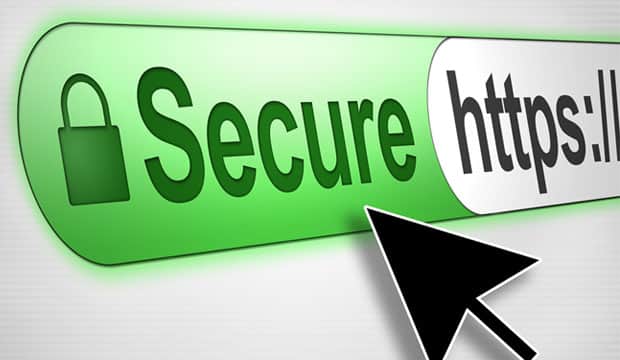If you’re a website owner, the importance of domain name security cannot be overstated. Your domain name is not just an address for your online business; it’s also a valuable asset that should be protected at all costs.
Without proper protection, your investment could easily fall victim to cyber-attacks, theft, or other malicious activities that can severely impact your brand reputation and revenue stream.
In this blog post, we’ll explore why domain name security is crucial and provide tips on how to keep your investment safe. So buckle up, and let’s dive in!
Introduction to Domain Names
Domain names are a critical part of any online business or personal brand. A domain name is the web address that people use to find your website. It’s how customers and clients find you online and how you build credibility and trust with your audience.
While a domain name may seem like a small detail in the grand scheme of things, it’s one of the essential elements of your online presence. That’s because your domain name is integral to your brand identity and is pivotal to your website’s security.
This blog post will discuss the importance of domain name security and why protecting your investment is so critical. We’ll also provide some tips on how to keep your domain name safe from hackers, phishers, and other cybercriminals.
Types of Domain Name Security
There are many types of domain name security, but the most important ones are registrar lock, WHOIS privacy, and two-factor authentication.
Registrar lock is a security measure that prevents unauthorized changes to your domain name. This is important because it ensures that only you can make changes to your domain name, preventing cyber criminals from being able to redirect your website to a malicious site.
WHOIS privacy is a service that obscures your personal information from public view. This is important because it protects you from identity theft and spam.
Two-factor authentication is an extra layer of security that requires you to confirm your identity with a second factor, such as a code sent to your email or phone. This is important because it makes it much harder for someone to hack into your account and take control of your domain name.
Benefits of Investing in Secure Domains
There are many benefits to investing in secure domains, including:
1. Increased security for your website and email communications.
2. Protection from cybercrime and online threats.
3. Reduced risk of domain name hijacking and theft.
4. Enhanced brand protection and reputation management.
5. Increased search engine visibility and traffic.
6. Improved customer trust and confidence in your business.
Preventive Measures for Protecting Your Investment
As the first step in protecting your domain name investment, you should take some precautionary measures to ensure its safety. Here are a few tips:
1. Register your domain name with a reputable registrar. This will help to protect your domain name from being hijacked or stolen.
2. Choose a strong password for your registrar account and enable two-factor authentication, if available. This will help to prevent unauthorized access to your account.
3. Keep your contact information up to date at your registrar. This way, if suspicious activity is on your account, you can be quickly notified and act accordingly.
4. Use the WHOIS Privacy Protection service, if available, from your registrar. This will help to keep your personal information hidden from public view, making it more difficult for cybercriminals to target you.
5. Monitor your domain name regularly for any suspicious activity. If you see anything unusual, contact your registrar immediately and take appropriate action.
Common Threats You Should Be Aware Of and How To Protect Against Them
As the internet continues to grow and evolve, so do the threats that users face online. While many threats exist, some are more common than others. Below, we’ll look at some of the most common hazards you should know and how to protect against them.
One of the most common threats faced by internet users is malware. Malware is a type of software that is designed to damage or disable computers and other devices. There are many different ways that malware can infect your device, such as through email attachments, downloads, or even by visiting infected websites.
Once your device is infected with malware, it can be used to steal your personal information, send spam emails, or even launch attacks on other devices on the network.
To protect yourself from malware, keeping your operating system and software up-to-date with the latest security patches is essential. You should also install reliable anti-malware software on your device and scan your computer regularly for potential threats.
Another common threat you should be aware of is phishing. Phishing is an online fraud where scammers attempt to trick you into providing personal information or financial data.
They may do this by creating legitimate fake websites, sending spoofed emails or text messages, or even making phone calls pretending to be from a trusted source.
Never click on links or open attachments from unknown sources to protect yourself from phishing scams. Additionally, you should only provide personal or financial information to someone over the phone, email, or text if you are certain they are from a legitimate source.
Finally, it’s important to be aware of online scams and frauds. These threats often involve people attempting to steal your money or personal data using fake websites, emails, or phone calls.
To protect yourself from these types of scams and fraud, never give your financial information or passwords to anyone online.
Be sure to double-check URLs and be wary of offers that seem too good to be true. Additionally, look into any company before providing them with payment information or signing up for services.
How to Maintain and Monitor Your Domain Name Security
Your domain name is critical to your online identity and business. Protecting it should be a top priority. Here are some tips on how to maintain and monitor your domain name security:
1. Keep your contact information up to date. Ensure your registrar has your current email address, phone number, and mailing address. This way, you can be quickly contacted if there’s ever an issue with your domain.
2. Use a strong password for your registrar account and enable two-factor authentication if available. This will help prevent unauthorized access to your account.
3. Set up domain security features like Domain Lock or Registrar Lock if offered by your registrar. These features help prevent changes to your DNS settings or domain transfer without your permission.
4. Monitor your domain’s WHOIS record periodically to ensure accuracy and look for any changes that could indicate malicious activity (e.g., a change of registrant email address).
5. Be cautious of unsolicited emails or calls related to your domain name – these could be attempts at phishing or other scams. If you’re unsure about the legitimacy of something, contact your registrar directly to confirm before taking any action.
Conclusion
Domain name security is a critical part of protecting your online investments. By taking the necessary steps to protect and secure your domain, you can rest assured that it will remain safe from malicious attackers.
A secure domain name also provides an added layer of trust for customers considering doing business with you. If you want peace of mind, ensure your domain name is protected and secure against potential threats.



